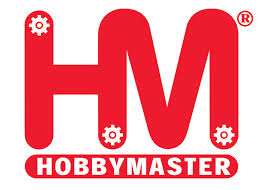 Loading... Please wait...
Loading... Please wait...| Expected release date is 30th Jul 2024 |
| Hobby Master 1:72 HA3597 F/A-18C Hornet - Swiss Air Force 11 Staffel Tigers, #J-5011, Cambrai AB, France, NATO Tiger Meet 2003 |
|||||
|---|---|---|---|---|---|
| Scale: 1:72 |
Length: 9.25" |
Width: 6.25" |
Composition: Diecast |
SKU: HM-HA3597 |
Period: Modern |

Preorder Expected Arrival - JULY 2024
The NATO Association of Tiger Squadrons was established in 1961 to promote solidarity between NATO air forces. Each year, it holds a "Tiger Meet" to give member nations an opportunity to train together in simulated battle over the skies of Europe. As well as being opportunities for NATO air forces to share ideas and experiences, the meets are also public relations exercises and participating squadrons often decorate their aircraft with elaborate tiger-striped paint schemes.
Although Switzerland is not a member of NATO, Fliegerstaffel 11 is a member of the NATO Tiger Association and takes part in their Tiger Meets. In 2004 a decision was made to give an F/A -18C a permanent special tiger scheme with the honor going to J-5011. During normal operation J-5011 is flown by the squadron commander. The McDonnell Douglas F/A-18 Hornet is a twin-engine, supersonic, all-weather, carrier-capable, multirole combat jet, designed as both a fighter and attack aircraft (hence the F/A designation). Designed by McDonnell Douglas (now Boeing) and Northrop, the F/A-18 was derived from the latter's YF-17 in the 1970s for use by the United States Navy and Marine Corps. The Hornet is also used by the air forces of several other nations, and since 1986, by the U.S. Navy's Flight Demonstration Squadron, the Blue Angels. The F/A-18 has a top speed of Mach 1.8 (1,034 knots, 1,190 mph or 1,915 km/h at 40,000 ft or 12,200 m). It can carry a wide variety of bombs and missiles, including air-to-air and air-to-ground, supplemented by the 20-mm M61 Vulcan cannon. It is powered by two General Electric F404 turbofan engines, which give the aircraft a high thrust-to-weight ratio. The F/A-18 has excellent aerodynamic characteristics, primarily attributed to its leading-edge extensions. The fighter's primary missions are fighter escort, fleet air defense, suppression of enemy air defenses, air interdiction, close air support, and aerial reconnaissance. Its versatility and reliability have proven it to be a valuable carrier asset, though it has been criticized for its lack of range and payload compared to its earlier contemporaries, such as the Grumman F-14 Tomcat in the fighter and strike fighter role, and the Grumman A-6 Intruder and LTV A-7 Corsair II in the attack role.
Info: F/A-18C Hornet - Swiss Air Force 11 Staffel Tigers, #J-5011, Cambrai AB, France, NATO Tiger Meet 2003
